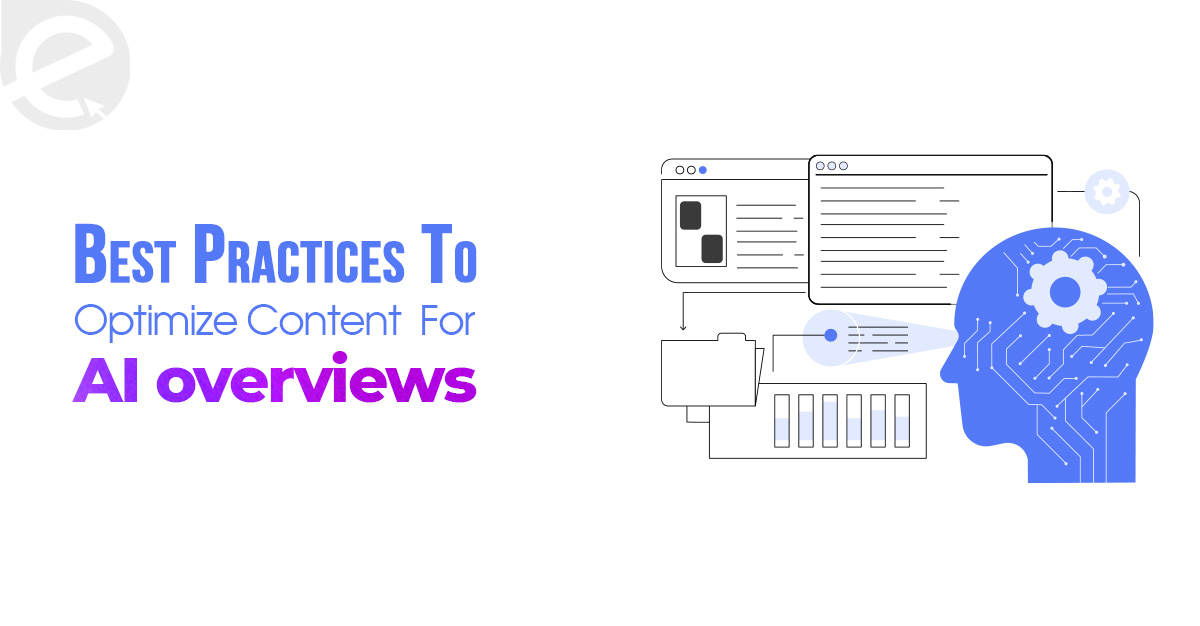
We Develop Websites Keeping Marketing in Mind
A Complete Website Launch Checklist To Ensure Its Smooth Functionality
 Jul. 18, 2024, 12:00 AM
Jul. 18, 2024, 12:00 AM- By Eclick Softwares and Solutions

Businesses are engaged in building authority and boosting brand awareness by launching their websites. Developing a website has become easier with the availability of so many website builders and content management systems (CMS). Once the functional website is ready, the final step is launching it so that potential prospects can come across the website. However, to launch the website rightfully, user experience has to be properly ensured and its usability tested.
I. Checklist for Pre-Launching A Website
Checking every element of the website diligently is a necessity because the websites are complex. The first three basic components in concern are design, content and testing.
1. The Website Design Needs A Thorough Review
Chances are there that the website design has a few inconsistencies and formatting mistakes. Hence, first of all, ensure the final website design is perfectly aligned with the original plan. No minimal website design errors are allowed, or else it will shatter the user experience. To add to the worst, the brand may be projected as unprofessional due to the mistakes.
a. Comparison Between the Final Website Design With the Approved Design
Attention to detail is the key to reviewing each and every component of a website design. The fonts, style, header, formatting, content and layout should be consistent.
b. Images and Their Licensed Need Reviewing
Only licensed stock images should be uploaded on a website, and it should be ensured. However, for the website to gain credibility as well as a personal touch, better to use royalty-free images. Compulsorily double-check the image size and quality.
c. The Fonts and Other Website Design Elements Are to be Reviewed
Check every website design-related elements, which include line height, line spacing, font styles, imagery, navigation, colour contrast, leading and consistency. If new content is added during the development stage, the content colour and style should match the website design theme.
d. Check the Website Design’s Mobile Compatibility
Because 59% of global website traffic is coming from smartphones, it's crucial to make the website design mobile-friendly:
• Creating A Responsive Website Design
To fit different orientations and screen sizes, the website will automatically adjust the design elements and content.
• Having All Pop-Ups Removed
Removing pop-ups prevents cluttering on the smartphone screen sizes. Thus, the user experience is better.
2. Web Content Optimization
Web content navigates the users through the website, shares brand details along with its products and service details, and formulates a strong connection between the website and potential customers.
To ensure the website is active online and visible, ranking on the top of search engines and migration is smooth - the best SEO practices are to be followed. To optimize your site:
a. Make Sure To Export High-Ranking Pages:
Using Google Analytics, SEMrush or other ranking tools, a list of high-traffic website pages can be exported. Exporting the high-ranking pages beforehand helps in double-checking that the elements such as the URLs, content structure and website addresses are correctly carried over to the new website. Likewise, disruptions possible to confuse the search engines and potentially hurt the rankings are minimized.
b. Setting Up A Workbook Specifying Web Content Strategy
Start by combining both lists into a spreadsheet to be documented with all the highest-ranking web content in one place. Creating different columns, including the page type, number of links to the web page, keywords, title tags, page descriptions, and header tags. Begin creating 301 redirects from the old website to the new one.
c. Reviewing Meta Descriptions and Title Tags
Meta descriptions impact the click-through rates So, the Meta Descriptions should meet these criteria:
• Be unique for every web page and around 160 characters, including spaces
• Include a target keyword
• Compelling sentences to give a clear idea to users about what the web page is
Similar to Meta Descriptions, the well-performing Title Tags should be created to be:
• Unique for all web pages
• Must begin with the keyword and explain the web page’s topic
• Within 55 characters, including the spaces (P.S. - Longer title tags might be truncated in the search engine results.)
d. Auditing the Formatting, Images, Links, CTA and Body Text
After updating all the web content, the final website design and content should be audited by:
• Formatting: Well-formatting the web contents with H1, H2, H3, H4 and more.
• Images: Keeping alt tags for all images, like the Image Title, Image Description and Alt-Text.
• Links: Cross-checking the internal and external links and ensuring they are functioning. Internal links on web content should be directing the consumers to the brand’s products and services.
• Body Text: Ensuring relevant web content with the target keywords included.
• Call-To-Action: Strategically placing the clear and concise CTA that compels the users to act as desired.
3. Conducting Browser Testing
By no means should browser testing be skipped as it is the most critical part and could cost a lot. Ignoring it might be the top reason why the site has failed.
a. Testing the Forms
All forms on the website should be verified for their proper functionality. All the forms should be tested to ensure every submission is getting an auto-response email including a marketing message with the submitter being acknowledged. Furthermore, the form should be saved on the website's database, and the Analytics tool should count it as the conversion.
b. Page Testing
The web pages should be tested for CSS/HTML errors and their different device compatibility, such as on laptops, Smartphones, computers, tablets and iPads.
c. Testing the Page Speed and Other Features
Website performance can be tested by using Pingdom Tools and Google PageSpeed. The buttons, tabs and other features should also be tested for their working efficiency and user-friendliness.
4. Following The Final Pre-Website Launch Checklist
After the website has cleared the design, content, development and testing stages; now is time to ensure you are on the right track before launching the website:
• It's compulsory to connect all third-party items to the relevant accounts.
• Using WebZip, the old website’s copy can be downloaded.
• Access to all domains should be confirmed.
• List out and complete all the uncompleted tasks.
II. Checklist For The Website Launching Day
The day when your website goes live is the result of successfully invested efforts and clearing the difficult part of the website launch checklist. Now completing a few tasks will ensure a successful launch:
1. Changing the Local Domain Name System (DNS) to Stimulate A Full Live Test
The content management system (CMS), third-party plugins, and webserver should be correctly configured for the domain, hence changing the Local DNS is important. To prepare and protect the website from all post-website launch issues, conduct a live test.
2. Activating or Migrating the SSL (Secure Socket Layers) Certificate
Encrypting all data between the web browser and the server, an SSL Certificate is important for customer privacy and website security. Having an SSL certificate mandates it to be migrated to the new website. A new one should be purchased, if you do not have one.
3. Ready, Set and Launch
Request the website administrator to update the DNS by sending the launch IP address. Make an official announcement of your website launch on social media platforms, publish a newsletter, and set a timer. Now your website is ready for the online audiences to browse.
III. Checklist For Post Website Launch
After the website has gone live, then the real work starts. Upgrade and optimize the website following the latest trends to ensure the website is a success. These are a few pointers for a post-website launch checklist that makes it easier:
1. Website Optimization
Website optimization is the key to improving user experience and website ranking. It increases customer retention, conversions and traffic on the website. To optimize your website:
• Leverage browser caching
• Make use of high-quality images and include the necessary tags
• Emit the redundant characters and necessary spaces and lines for minifying the CSS, HTML and JavaScript files.
• Set up a Content Delivery Network (CDN) to reduce bandwidth usage and speed up the web content delivery process.
2. Website Marketing And Promotions
Potential customers - old and new should know about your website, so it's necessary to spread about the newly launched website. Some effective ways are guest blogging, online giveaways, paid media and email marketing.
3. Crawling Website And Regularly Updating It
After launching the website, optimizing the content and advertising the launch; remember to heed the crawlability matter. Auditing the website regularly to analyze the site performance and come across technical issues and troubleshooting them before they arise will address the crawlability.
A comprehensive 10-step process successfully launches a website. Each step is integral and begins with defining objectives, planning content, executing design and development and rigorous testing. To add to the success, prioritize user experience, ensure security and optimize performance. Post-website launch, continuously monitor and be careful of adaptability to make it an ever-evolving website ready for growth and excellence.
Related Blog
- By Eclick Softwares and Solutions
- June 20, 2025
A Complete Guide to Payme ...
Integrating a payment gateway helps businesses facilitate tr ...
Read More- By Eclick Softwares and Solutions
- June 4, 2025
Best strategies to optimi ...
AI overviews enhance the visibility and trustworthiness of a ...
Read MoreSearch Blog...
Recent Posts
Eclick Services







